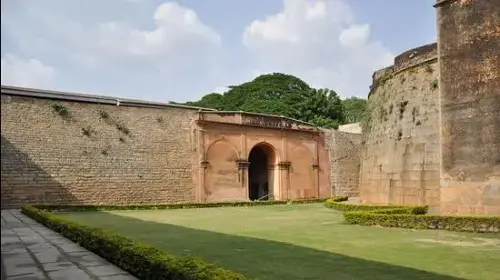
Last week, a momentous anniversary in the history of our city quietly passed us by. The only public marker of that date is inscribed on a plaque embedded into a stone wall in a bustling part of the old city adjoining the Victoria Hospital, well above eye level, rendering it effectively invisible to the crowds that surge impatiently past it. “Through this breach,” reads the plaque on the Delhi Gate, the north-eastern entrance into, and the last vestige of, the erstwhile Bangalore Fort, “the British assault was delivered – March 21, 1791”.
Rewind to 1781, Yorktown, Viriginia. Six years after the Declaration of Independence by the American colonies in 1776, fierce fighting between the Continental Army led by Gen George Washington and the British has left both sides exhausted. In the fall of 1781, Gen Charles Lord Cornwallis of the British Army occupies Yorktown, a port on the River York, awaiting much-needed supplies and reinforcements from the Royal Navy to re-equip his 9000-man army. Around the same time, in New York, Gen Washington receives word from his French allies that a French fleet will be available for critical naval support in Virginia, and begins to march south.
On September 5, the French fleet routs the Royal Navy, preventing reinforcements from reaching Cornwallis. On September 28, the Continental Army, supported by French troops, begins the siege of Yorktown. By October 19, having lost thousands of men, Cornwallis surrenders. The last major land battle for America is done and dusted; the Americans (and, by extension, the French) have won.
What now of General Cornwallis? With the shame of losing America trailing him like a stink, he returns to England in 1782, where he continues, astoundingly, to retain the confidence of King George III.
Meanwhile, thousands of miles away, in the southern Indian peninsula, things are hotting up. In December 1782, even as the Second Anglo-Mysore War rages, Hyder Ali, also a French ally and a folk hero to the American revolutionists, dies, leaving his son Tipu Sultan to lead the Mysore army. In 1784, with both armies equally matched, the war ends with the Treaty of Mangalore being signed between the British and Tipu, leaving the former redfaced.
Fearful that Mysore will go the way of America, King George appoints Cornwallis Governor-General of India in 1786 and despatches him to Calcutta. Later the same year, paying scant regard to the Treaty of Mangalore, Tipu invades Travancore, a British ally, handing Cornwallis his excuse to retaliate.
On December 13, 1790, Cornwallis lands in Madras. Assuming command of the troops at Vellore on January 27, 1791, he begins marching towards Bangalore on February 5, hoping to subdue it and obtain for himself the perfect base to launch an attack on Tipu’s capital, Seringapatam (Srirangapatna). While Tipu expects the British Army to take a southern route through the eastern ghats, and has his men stationed there, Cornwallis, following the advice of his meticulous surveyor, Sir Alexander Beatson, marches his army via the little-known Muglee Pass in the north, getting “past Colar and Ooscottah (Kolar and Hoskote) to within 10 miles of Bangalore, without molestation,” by March 4.
On March 7, despite a courageous fightback by the Mysore troops, the Bangalore pettah – the less-fortified market town to the north of the oval stone fortress of which the Delhi Gate is a part – falls to the British. The next day, the siege of the oval fortress begins. The first breach is made on the 18th. At 11 pm on March 21, 1791, with the moon shining bright, Cornwallis’ men storm the fort. Alarms are frantically sounded, and the kiledar, Bahadur Khan, and his brave men fight gallantly, but it is all over within the hour. Perhaps the Tiger of Mysore does not realize it at the time, but the fall of Bangalore is, for him, the beginning of the end.
(Roopa Pai is a writer who has carried on a longtime love affair with her hometown Bengaluru)